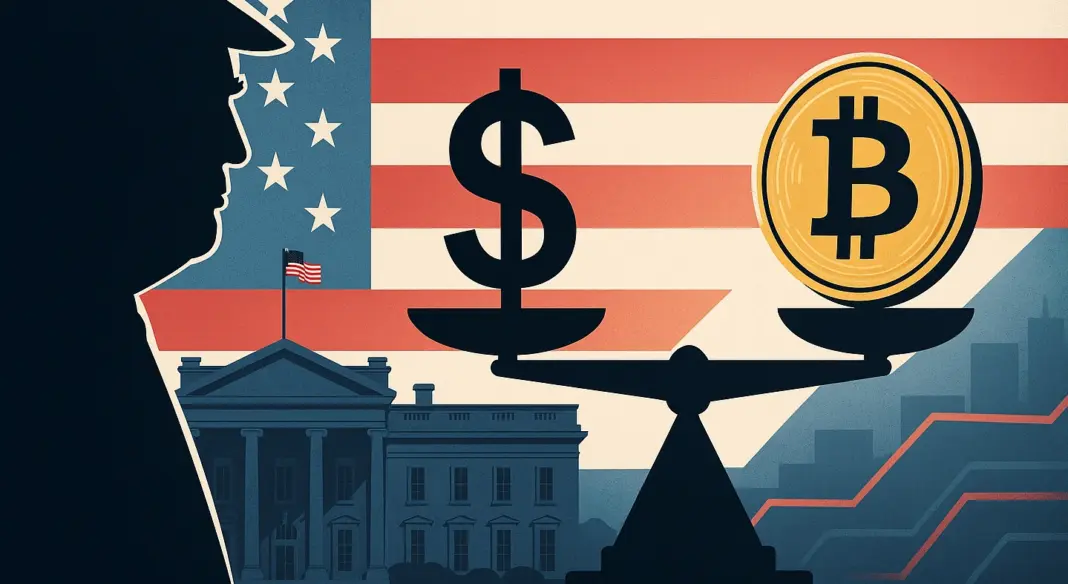The Federal Reserve’s dual mandate of stable prices and maximum employment has been the central banker’s bread and butter for decades.
But along comes Donald Trump’s newest Fed nominee, Stephen Miran, who dusts off a dusty third mandate buried in the Federal Reserve Act, one about keeping moderate long-term interest rates.
Suddenly, it feels like the Fed might get a whole lot more interesting, and crypto traders are quietly rubbing their hands with glee.
Stay ahead in the crypto world – follow us on X for the latest updates, insights, and trends!🚀
Yield curve control
Why is this third mandate important? It’s been ignored for years, like that odd sock behind the dryer, presumed irrelevant as long as inflation and unemployment looked good.
But Trump and his team see it as a green light to unleash new tools aiming to push long-term borrowing costs down.
With Fed board member Miran now confirmed, the MSM is preparing the world for the Fed's "third mandate" which is essentially yield curve control. LFG!
YCC -> $BTC = $1m pic.twitter.com/jlPQZJ0cHm
— Arthur Hayes (@CryptoHayes) September 16, 2025
Their playbook includes big bond-buying sprees, Treasury bill maneuvers, or even the dreaded yield curve control. Basically, they want to slap a lid on long-term interest rates.
With the U.S. national debt ballooning past $37 trillion, cheaper long-term rates sound like a politician’s dream.
Trump has criticized Fed Chair Jerome Powell for dragging his feet on rate cuts, pushing the Fed to do more than just fiddle with short-term borrowing costs.
Treasury Secretary Scott Bessent backs this, waving the Fed’s third mandate like a secret weapon to justify market meddling.
JUST IN: 🇺🇸 President Trump says Fed Chair Jerome Powell has "been very bad for our country, we should have the lowest interest rate on earth." pic.twitter.com/dtmNkPS7oo
— Watcher.Guru (@WatcherGuru) July 14, 2025
It happened before
Crypto fans smell opportunity in the chaos. Christian Pusateri, founder of Mind Network, calls this financial repression by another name, arguing that suppressing rates creates instability that bolsters Bitcoin’s role as a hedge.
This is very interesting.
For the first time in its 112 years, The Fed may be adding a new mandate.
The “third mandate” is financial repression by another name. It looks a lot like Japanification- aka Yield Curve Control.
Thinking through this
Until now, the Fed’s mandate… pic.twitter.com/44mSOOumwv
— Christian (@TheTAOofData) September 17, 2025
Now, experts say history offers a savvy guide. The U.S. government capped bond rates to finance World War II, and Operation Twist in the ’60s bent the curve by swapping short bonds for long ones.
The Fed’s massive purchase of Treasuries and mortgages during the 2008 crisis and the pandemic also aimed to keep long-term borrowing cheap.
Moderate interest rates?
But beware bond traders, Daniel Ivascyn of Pimco cautions that if the Fed becomes the ultimate buyer of bonds, betting against long-term debt could turn into a financial nightmare.
And maybe the most important question, what counts as moderate anyway?
With the 10-year Treasury yield near 4%, already below the 1960s average of 5.8%, some say this looks pretty tame.
Others argue more intervention is needed, and Trump’s pick is ready to play that hand.
Disclosure:This article does not contain investment advice or recommendations. Every investment and trading move involves risk, and readers should conduct their own research when making a decision.
Kriptoworld.com accepts no liability for any errors in the articles or for any financial loss resulting from incorrect information.
Cryptocurrency and Web3 expert, founder of Kriptoworld
LinkedIn | X (Twitter) | More articles
With years of experience covering the blockchain space, András delivers insightful reporting on DeFi, tokenization, altcoins, and crypto regulations shaping the digital economy.
📅 Published: September 22, 2025 • 🕓 Last updated: September 22, 2025
✉️ Contact: [email protected]


